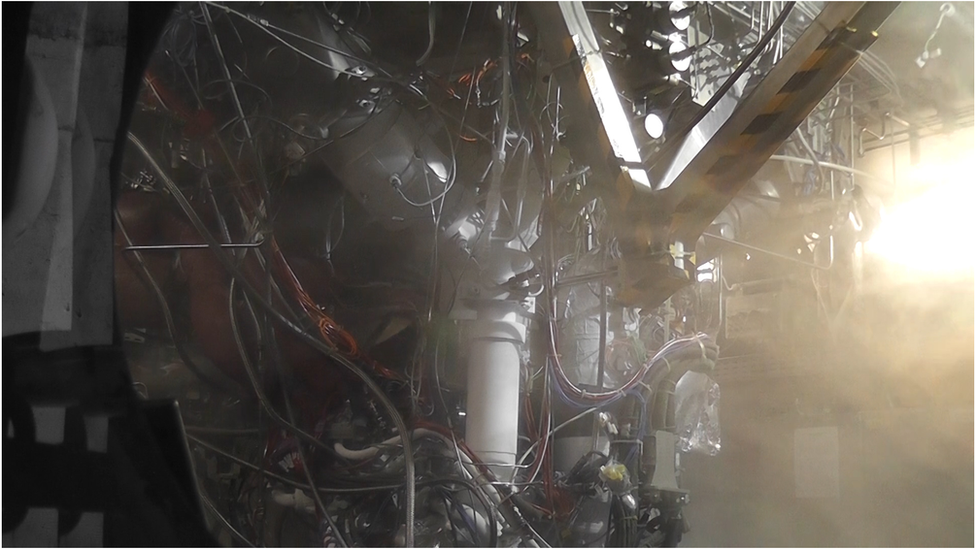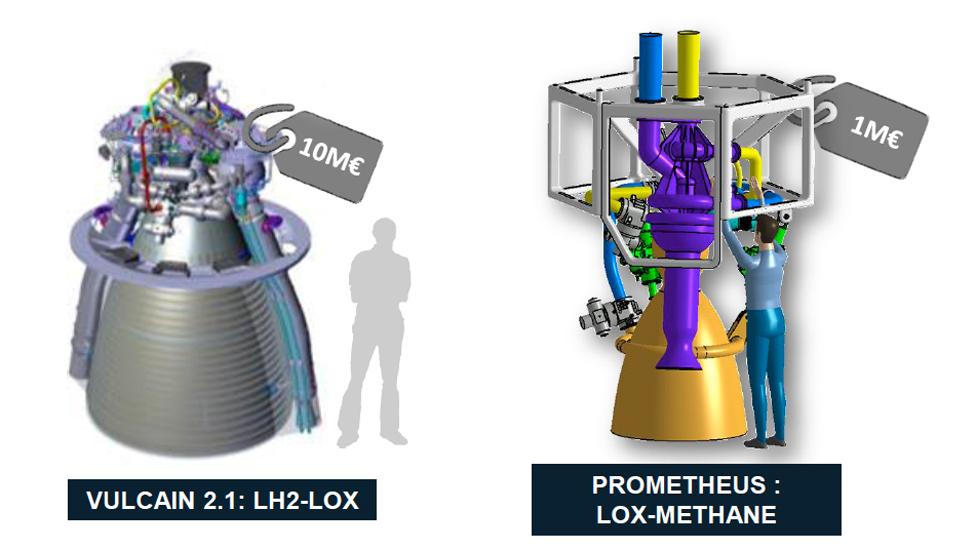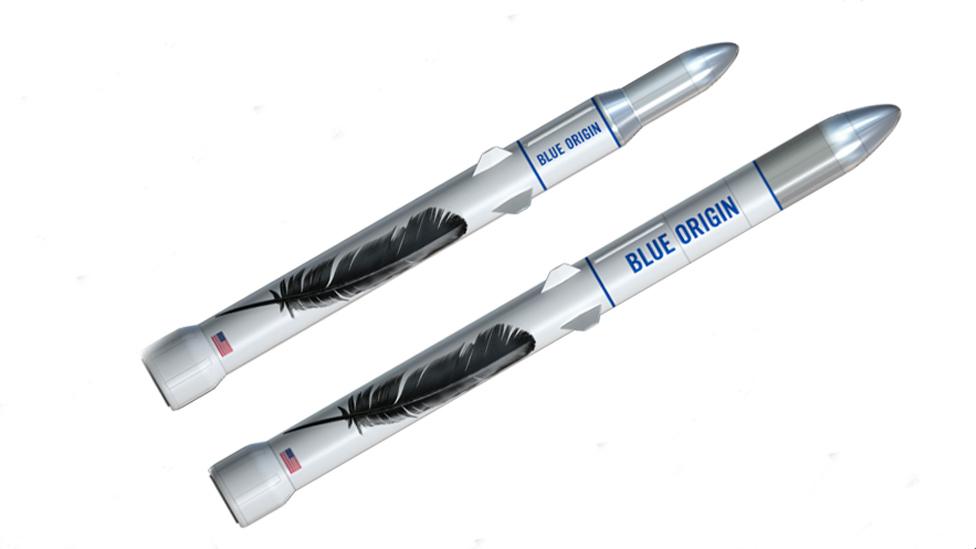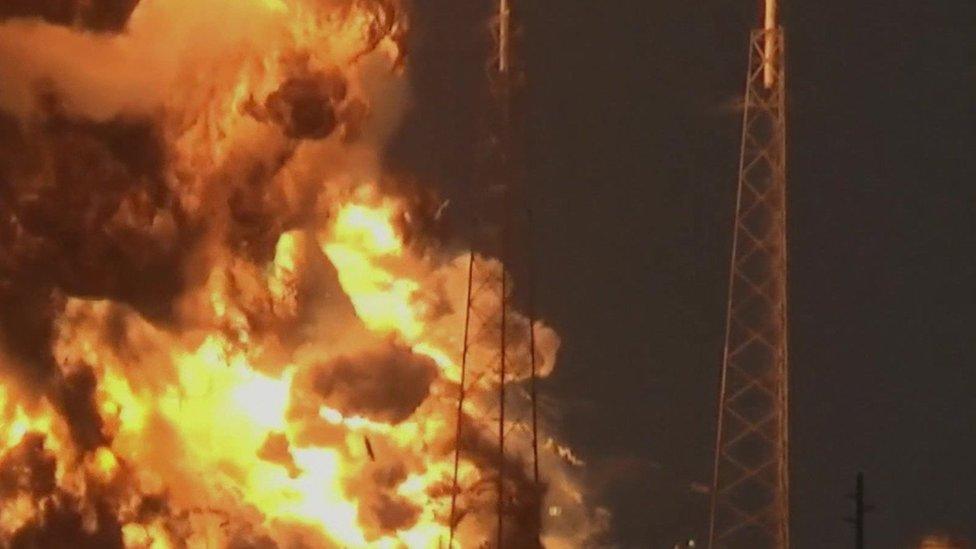Clear path to Ariane 6 rocket introduction
- Published
ArianeGroup's promotional video for the Ariane 6
The company set up to manufacture Europe's next-generation rocket - the Ariane 6 - says it is open to orders.
Airbus Safran Launchers (ASL) expects to introduce the new vehicle in 2020.
This week, member states of the European Space Agency gave their final nod to the project following an extensive review process.
The assessment confirmed the design and performance of the proposed rocket, and the development schedule that will bring it into service.
Esa has earmarked R&D funds of €2.4bn for the Ariane 6. Twenty-eight percent of that sum was given to ASL in August 2015. The completion of the review, and the member states' acceptance of it, means the balance should now follow.
"Now that we are sure that the development programme will go through to the end, Arianespace will start marketing the Ariane 6," said Alain Charmeau, the CEO of ASL.
"I am sure there will be many commercial satellite customers out there who will want to have Ariane 6 in their order books for 2021," he told BBC News.
ASL is about to take a majority shareholding in Arianespace, the company that has traditionally sold the payload space on Ariane vehicles.
This change in ownership is the last part of a major reorganisation in Europe's rocket industry that seeks to keep it competitive into the future.

A hot-fire test campaign for the new Vinci upper-stage engine got under way this summer
The current Ariane 5 vehicle, although remarkably reliable and consistent in its performance, costs substantially more to build and launch than some of its competitors - in particular, the Falcon 9 rocket operated by SpaceX in the US.
The Ariane 6 is Europe's response. It aims to halve the 5's cost-per-kilo for putting satellites in orbit.
Industrially, this requires a transformation of the rocket production process: to use fewer people, more streamlined ways of working, and new fabrication techniques.
The Ariane 6 will come in two versions. One, known as Ariane 62, will loft medium-sized spacecraft into orbit - the kind of platforms that image and study the Earth.
A second version, known as Ariane 64, will put up the heavy telecommunications spacecraft, which sit 36,000km above the equator.
The new rocket leans heavily on its heritage. Indeed, its upper-stage engine, called Vinci, was originally intended for an upgrade of the Ariane 5.
Prototype Vinci test firings have been conducted through the summer.

The Prometheus engine would be made substantially cheaper than the existing Vulcain power unit
Although the design for the Ariane 6 is frozen, ASL is already looking to evolutions of the vehicle that could bring down its costs still further.
One proposal is to replace the Vulcain engine at the base of the rocket with an all-new propulsion unit.
The Vulcain, which currently also powers the Ariane 5, is a very complex piece of engineering that hails from a period when Europe thought it would launch astronauts and needed some extra assurance in the technology.
"The Vulcain was designed 30 years ago with the purpose of being the main engine on a man-rated launcher - because Ariane 5 was designed to be man-rated even if those launches never occurred. This is why we believe we can divide the cost by 10 with another engine designed for a different purpose," Mr Charmeau explained.
Prometheus, as it would be called, is likely to burn liquid methane and liquid oxygen. A development programme to explore the possibilities is to be proposed to Esa member states for consideration when their ministers meet in Lucerne in December, Mr Charmeau said.
Jonathan.Amos-INTERNET@bbc.co.uk, external and follow me on Twitter: @BBCAmos, external
- Published12 September 2016

- Published1 September 2016

- Published7 April 2016
- Published28 January 2016
- Published5 June 2015

- Published5 July 2014
- Published9 July 2013
